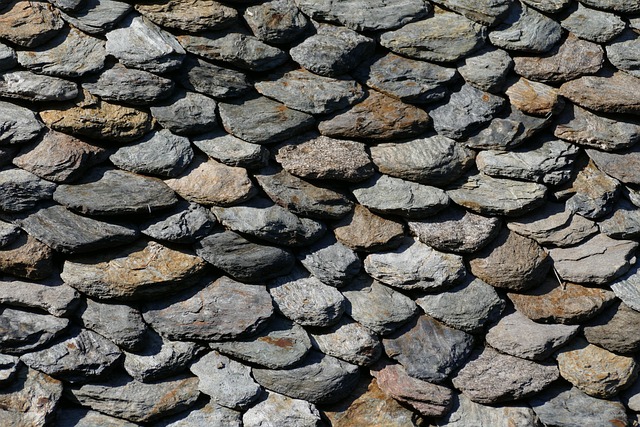Buildings face significant stress from environmental factors like wind, snow, earthquakes, and age, damaging structures and requiring frequent metal roof repair services. Lightweight construction materials offer a solution by reducing building weight, mitigating structural stress, enhancing energy efficiency, and lowering maintenance costs. Materials such as fiber cement boards, straw bales, lightweight steel, foam concrete, and aerated concrete blocks are durable, eco-friendly, and easily installed for both residential and commercial properties. When seeking metal roof repair services, it's crucial to hire professionals skilled in working with these specialized materials to ensure long-term structural integrity.
In the pursuit of safer, more sustainable structures, understanding and mitigating structural stress in buildings is paramount. This article explores lightweight materials as a revolutionary solution to reduce stress on building components, with a special focus on their application in metal roof repair services. By delving into the science behind structural stress, we uncover how these innovative materials benefit construction, offering durability, cost-effectiveness, and enhanced safety without compromising aesthetics.
From understanding key concepts to selecting the right metal roof repair experts, this guide covers all aspects for an informed decision.
Understanding Structural Stress in Buildings
Buildings, from residential homes to commercial skyscrapers, are subjected to various stresses due to environmental factors and everyday use. Structural stress refers to the force or pressure exerted on a building’s components, such as walls, floors, and roofs, which can lead to damage or failure over time. One of the primary areas of concern is the roof, especially in older structures where metal roof repair services might be required.
The weight of the building itself, wind loads, snow, and seismic activity are common causes of structural stress. Inadequate design, poor construction practices, or using substandard materials can exacerbate these issues. Lightweight materials offer a promising solution to mitigate structural stress by reducing the overall load on a building’s framework. By employing innovative building materials, engineers can enhance the structural integrity while minimizing the weight, ensuring safer and more durable structures.
The Role of Lightweight Materials in Mitigation
Lightweight materials play a pivotal role in mitigating structural stress on buildings, offering a range of benefits that extend beyond mere aesthetic appeal. In construction, the use of lightweight components can significantly reduce the overall weight borne by walls, roofs, and foundations, thereby lessening the strain on structural elements like beams and columns. This is especially pertinent for older structures or those in areas prone to natural disasters, where metal roof repair services may be required more frequently due to damage caused by wind, snow, or earthquakes.
Incorporating lightweight materials can also enhance a building’s energy efficiency. Lighter structures require less support, allowing for better insulation and reduced heat transfer, which translates into lower heating and cooling costs. This double benefit of stress reduction and energy conservation makes lightweight construction methods increasingly popular, especially with the growing demand for sustainable and cost-effective building solutions.
Benefits of Using Lightweight Materials for Roof Repair
Using lightweight materials for roof repair offers numerous advantages, especially in the context of modern construction and maintenance. One of the primary benefits is reduced structural stress on buildings. Traditional heavy roofing materials can put significant pressure on supporting structures, which may lead to damage over time. Lightweight alternatives distribute weight more efficiently, ensuring that the building’s framework remains intact and reducing the risk of structural failures.
Moreover, lightweight materials for metal roof repair services are highly versatile and cost-effective. They can be easily installed and replaced, making them ideal for both residential and commercial properties. This versatility allows for more creative design options while maintaining strength and durability. Additionally, these materials often have a lower environmental impact due to their reduced resource requirements during production, contributing to sustainable building practices.
Common Lightweight Material Options for Construction
In the pursuit of lightweight materials to reduce structural stress on buildings, construction professionals have a plethora of options to explore. Among the most commonly used are fiber cement boards, known for their durability and resistance to fire, moisture, and pests. These boards are often utilized in exterior cladding, providing both insulation and aesthetic appeal. Another popular choice is straw bale construction, which offers exceptional thermal mass properties, helping to regulate indoor temperatures naturally.
For metal roof repair services and structural enhancements, lightweight steel and aluminum alloys are gaining traction. These materials offer superior strength-to-weight ratios, making them ideal for modern architectural designs that demand both aesthetic beauty and functional efficiency. Additionally, lightweight concrete alternatives such as foam concrete and aerated concrete blocks are worth mentioning. They provide excellent insulatory properties and can significantly reduce the overall weight of a structure, thereby decreasing the load on its foundation and supporting elements.
Choosing the Right Metal Roof Repair Services
When considering metal roof repair services, it’s crucial to select professionals who understand the unique challenges of lightweight materials. Not all roofing experts are equipped to handle metal roofs effectively, as they require specialized knowledge and tools to minimize structural stress while ensuring a durable fix. Look for companies that specialize in metal roof repairs and have experience working with your specific material.
The right contractors will assess your roof, identify potential issues, and employ appropriate techniques tailored to lightweight materials. They should offer solutions that balance repair efficiency with long-term structural integrity, ensuring your building remains safe and sound under their care.
Lightweight materials play a pivotal role in reducing structural stress on buildings, offering numerous benefits, especially in roof repair. As discussed, these materials not only ease the load on existing structures but also provide cost-effective and aesthetically pleasing solutions. When considering metal roof repair services, it’s essential to opt for professionals who understand the unique properties of lightweight materials, ensuring long-lasting and stress-resistant repairs. This approach can significantly enhance a building’s structural integrity while maintaining its beauty and functionality.
